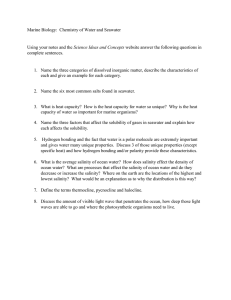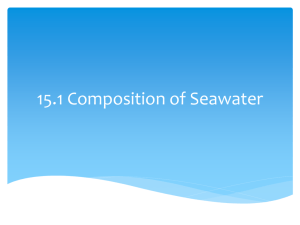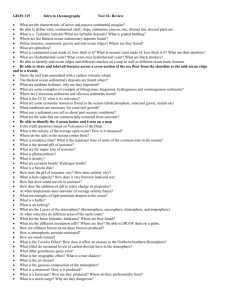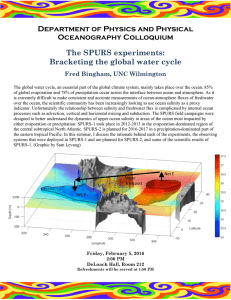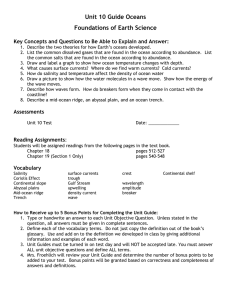Earth Science Chapter 15 Test Study Guide
advertisement
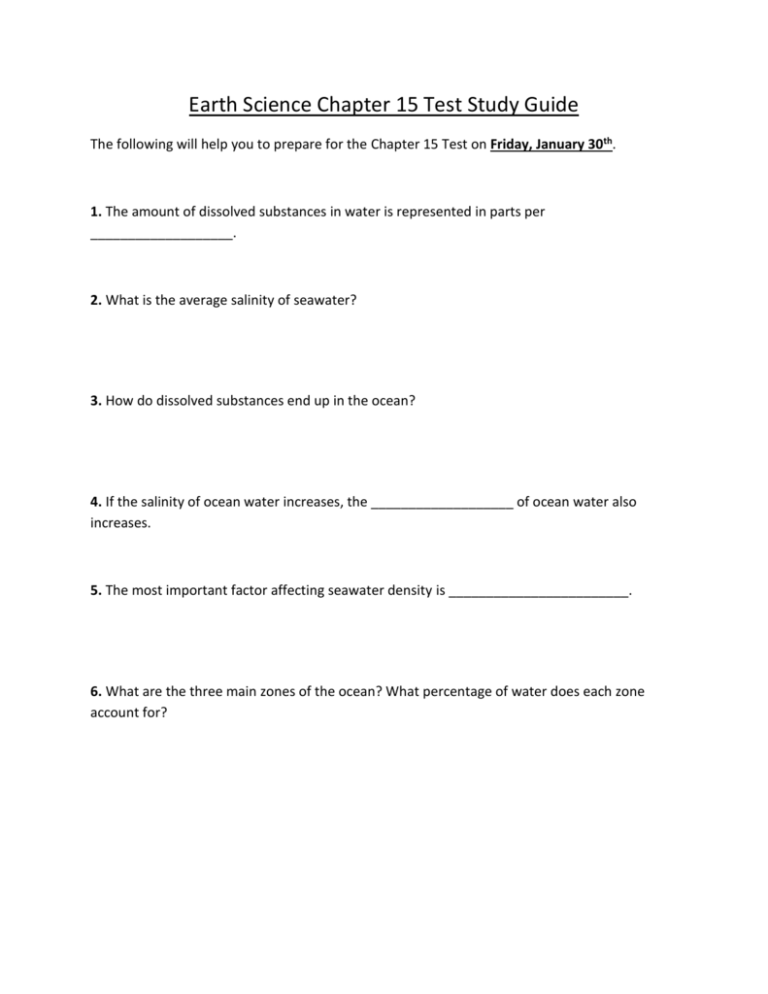
Earth Science Chapter 15 Test Study Guide The following will help you to prepare for the Chapter 15 Test on Friday, January 30th. 1. The amount of dissolved substances in water is represented in parts per ___________________. 2. What is the average salinity of seawater? 3. How do dissolved substances end up in the ocean? 4. If the salinity of ocean water increases, the ___________________ of ocean water also increases. 5. The most important factor affecting seawater density is ________________________. 6. What are the three main zones of the ocean? What percentage of water does each zone account for? 7. What are the three classifications of sea life based on where they live? Define each classification. 8. What is the main difference between the photic zone and the aphotic zone? 9. Which organism is most likely to survive the longest: the top predator in a food chain or the top predator in a food web? Why is this the case? 10. What are the characteristics of the abyssal zone? 11. Define primary productivity. Short Answer 12. Briefly describe the three groups into which marine organisms are classified. Include at least one example of an organism from each group. 13. What is a food chain? What is a food web? Draw an example of each 14. Ocean water tends to have a lower salinity near the poles and a high salinity near the equator. Explain why this is likely the case. 15. Identify each of the marine life zones shown in the figure. (abyssal zone, aphotic zone, euphotic zone, neritic zone, pelagic zone, photic zone)
